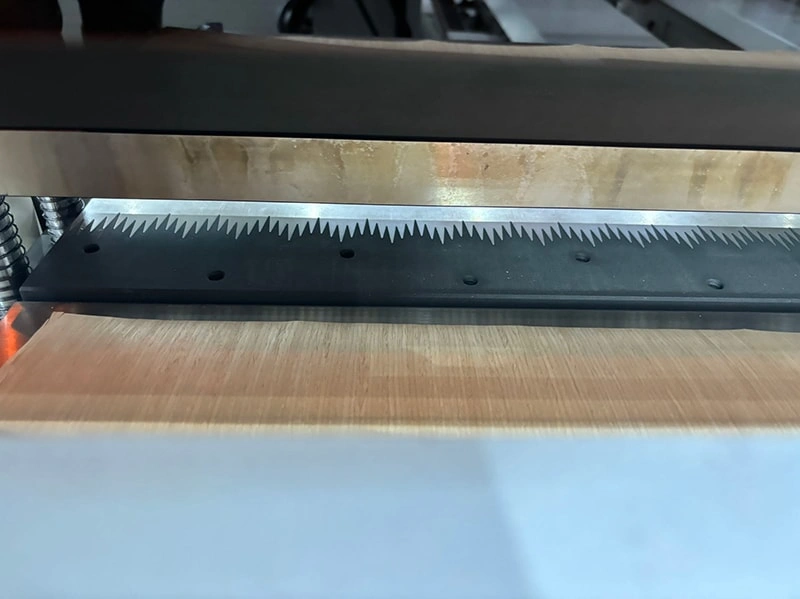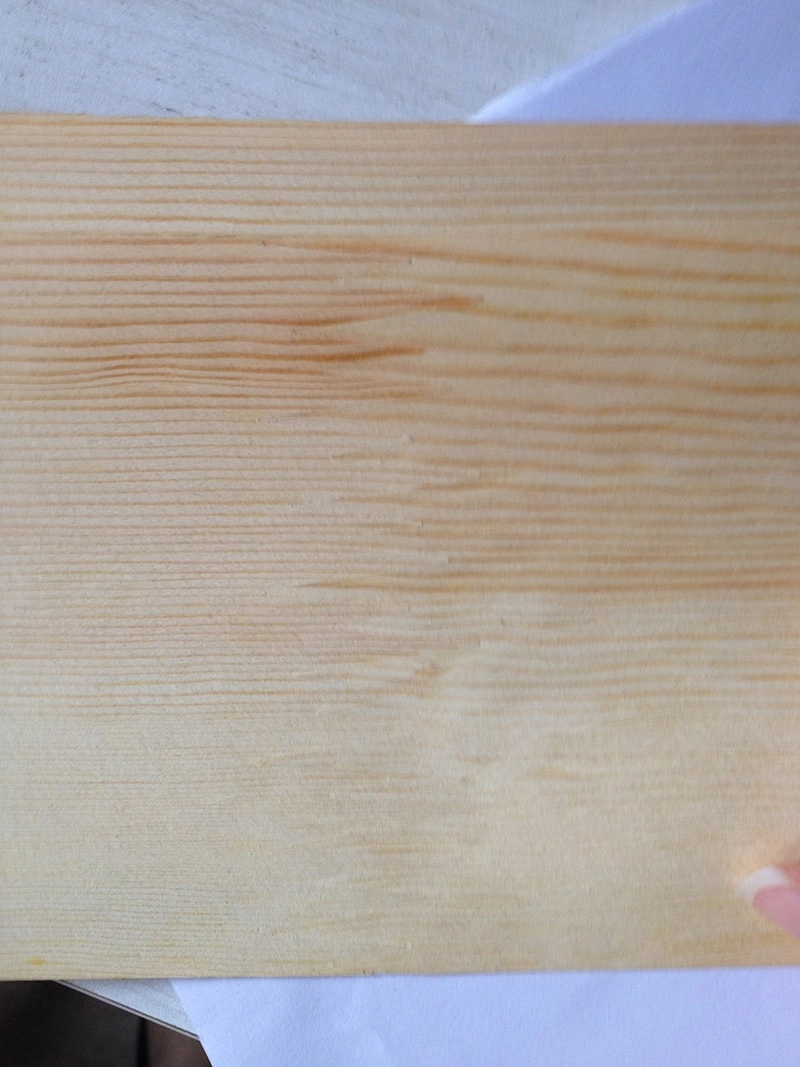The Veneer Finger Joint consists of two parts: finger cutting and splicing, which are extremely important. Any error in one part can lead to uneven splicing of the veneer.
The finger knife, also known as the sawtooth knife, is a highly specialized and crucial tool for wood veneer splicing. It is mainly used on finger splicing machines to process sawtooth shapes at the ends of veneer.

Sawtooth knives are usually made of high-quality alloy steel to ensure overall rigidity and strength. Pitch refers to the distance between two adjacent tooth tips. This is the most important parameter, as it determines the strength and appearance of the finger joint. The pitch is usually selected based on the thickness of the wood veneer.
The veneer connector of the Veneer Finger Joint is more important. At the joint of the two wood veneers, stick a non-woven fabric on the back. The stickiness of the non-woven fabric will fix the wood veneers together. The thickness of the non-woven fabric is only 0.01mm, and no trace of the non-woven fabric can be seen on the wood veneer.Non-woven fabric has strong toughness. When pasted on the wood veneer, it can prevent the wood veneer from tearing and provide good protection for it.

The operation process is to place the short edges of the two pieces of wood veneer closely against the aligned workbench. The serrated knife will cut two pieces of wood veneer into serrated shapes, and there is a heating plate at the bottom of the Veneer Finger Joint, which will heat the wood veneer. When the two wood veneers are joined together, a non-woven tape coated with hot melt adhesive is pulled out from the reel and attached to the back of the wood veneer joint. Then the heating plate above the machine presses down, firmly pressing the non-woven fabric tape onto the wood veneer to complete the splicing.
The tools store is a device on a CNC router used for storing and automatically changing tools. It is like a "tool warehouse", automatically removing the current tool from the spindle according to the instructions of the processing program and installing the tools required for the next process.
The 3D scanning spray painting machine, by integrating 3D vision scanning, intelligent path planning and precise spraying, is suitable for door panels with complex shape, significantly enhancing the automation level and quality of door panel spraying.
The greatest advantage of the CNC vertical panel saw lies in its ability to fix large sheets of board almost vertically on a sturdy frame. The saw blade rotates at high speed and moves horizontally to complete the cutting of the upright board.
The Veneer Wide Belt Sander is a device designed for large-scale, high-efficiency, and high-precision surface treatment of veneer. It can sand veneer as thin as 0.1mm.
The stability of the CNC Bean Saw is the key to ensuring its long-term efficient and precise operation. Use materials with sufficient strength and rigidity, and ensure the stability of the foundation through reasonable welding and reinforcement processes.
PUR Laminating Line is used to attach PVC, PP, PET film, decorative paper, thin wood veneer and other materials onto flat base material.The entire line is fully automated and connected, with a fast production rhythm and huge production capacity, which greatly reduces labor costs and labor intensity.
A multi-rip saw is a machine that can cut wood into multiple pre-adjusted widths at one time and is a highly efficient machine.The safety of the equipment is the most crucial aspect. This type of equipment combines high speed, high power and sharp cutting tools. Any negligence may cause serious accidents.
The Vacuum Membrane Press is a device that uses an electric heating and vacuum pumping system to adsorb thermoplastic sheets or wood veneers onto workpieces. This machine is mainly composed of a heating system and a vacuum pump.
The Edge Bander is one of the core equipment in the panel furniture production line. A fully automatic edge banding machine usually integrates the following specific functions: pre-milling, gluing, end cutting, rough trimming, fine trimming, corner trimming, edge scraping, and polishing.
The RMQ series independently developed by our company is specially designed for the Lacquered Panel Sander,The usual machine structure is R-P, which R is a rubber roller and P is a sanding pad.

No.9 LIAOYANG EAST ROAD , QINGDAO, CHINA
Copyright © 2025 by Qingdao Ruimuda Machinery Co., Ltd. All Rights Reserved


